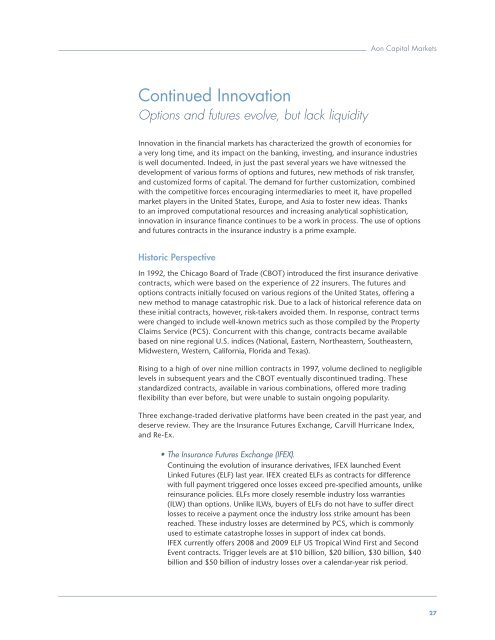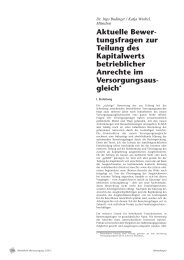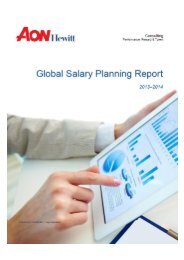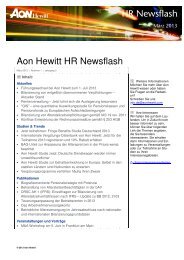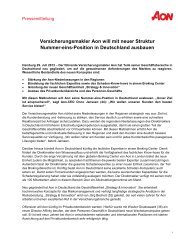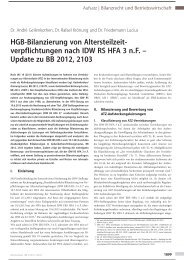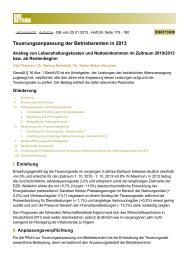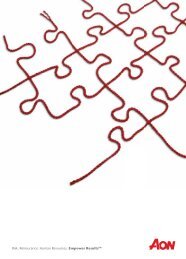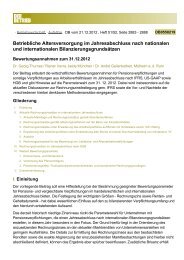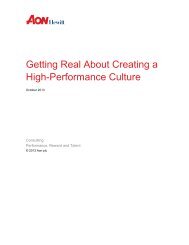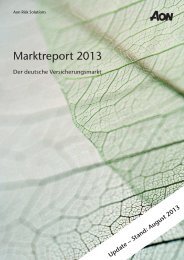Insurance-Linked Securities Report 2008 - Aon
Insurance-Linked Securities Report 2008 - Aon
Insurance-Linked Securities Report 2008 - Aon
You also want an ePaper? Increase the reach of your titles
YUMPU automatically turns print PDFs into web optimized ePapers that Google loves.
Continued Innovation<br />
Options and futures evolve, but lack liquidity<br />
Innovation in the financial markets has characterized the growth of economies for<br />
a very long time, and its impact on the banking, investing, and insurance industries<br />
is well documented. Indeed, in just the past several years we have witnessed the<br />
development of various forms of options and futures, new methods of risk transfer,<br />
and customized forms of capital. The demand for further customization, combined<br />
with the competitive forces encouraging intermediaries to meet it, have propelled<br />
market players in the United States, Europe, and Asia to foster new ideas. Thanks<br />
to an improved computational resources and increasing analytical sophistication,<br />
innovation in insurance finance continues to be a work in process. The use of options<br />
and futures contracts in the insurance industry is a prime example.<br />
Historic Perspective<br />
<strong>Aon</strong> Capital Markets<br />
In 1992, the Chicago Board of Trade (CBOT) introduced the first insurance derivative<br />
contracts, which were based on the experience of 22 insurers. The futures and<br />
options contracts initially focused on various regions of the United States, offering a<br />
new method to manage catastrophic risk. Due to a lack of historical reference data on<br />
these initial contracts, however, risk-takers avoided them. In response, contract terms<br />
were changed to include well-known metrics such as those compiled by the Property<br />
Claims Service (PCS). Concurrent with this change, contracts became available<br />
based on nine regional U.S. indices (National, Eastern, Northeastern, Southeastern,<br />
Midwestern, Western, California, Florida and Texas).<br />
Rising to a high of over nine million contracts in 1997, volume declined to negligible<br />
levels in subsequent years and the CBOT eventually discontinued trading. These<br />
standardized contracts, available in various combinations, offered more trading<br />
flexibility than ever before, but were unable to sustain ongoing popularity.<br />
Three exchange-traded derivative platforms have been created in the past year, and<br />
deserve review. They are the <strong>Insurance</strong> Futures Exchange, Carvill Hurricane Index,<br />
and Re-Ex.<br />
• The <strong>Insurance</strong> Futures Exchange (IFEX).<br />
Continuing the evolution of insurance derivatives, IFEX launched Event<br />
<strong>Linked</strong> Futures (ELF) last year. IFEX created ELFs as contracts for difference<br />
with full payment triggered once losses exceed pre-specified amounts, unlike<br />
reinsurance policies. ELFs more closely resemble industry loss warranties<br />
(ILW) than options. Unlike ILWs, buyers of ELFs do not have to suffer direct<br />
losses to receive a payment once the industry loss strike amount has been<br />
reached. These industry losses are determined by PCS, which is commonly<br />
used to estimate catastrophe losses in support of index cat bonds.<br />
IFEX currently offers <strong>2008</strong> and 2009 ELF US Tropical Wind First and Second<br />
Event contracts. Trigger levels are at $10 billion, $20 billion, $30 billion, $40<br />
billion and $50 billion of industry losses over a calendar-year risk period.<br />
27


